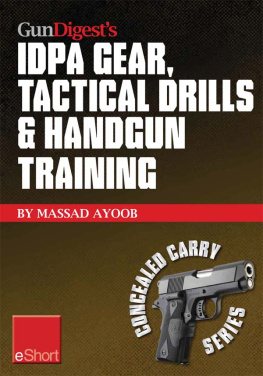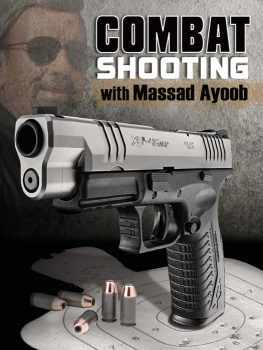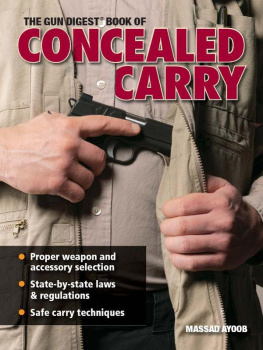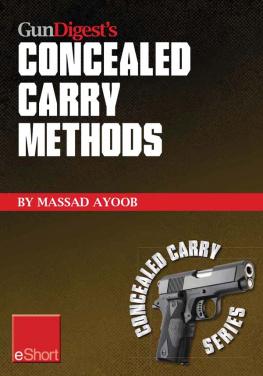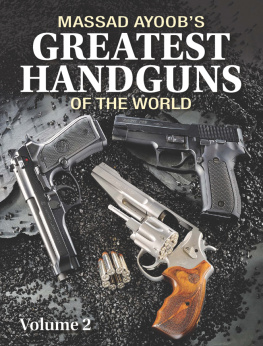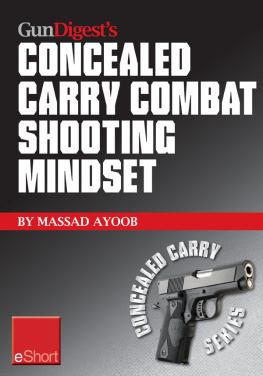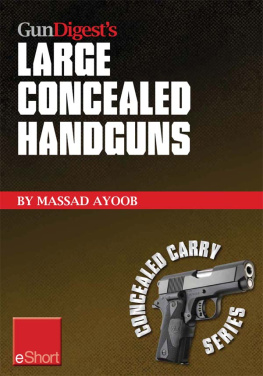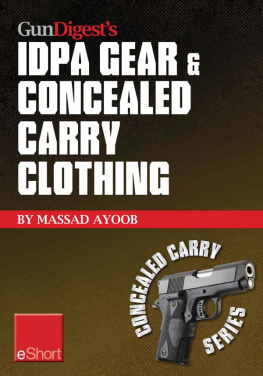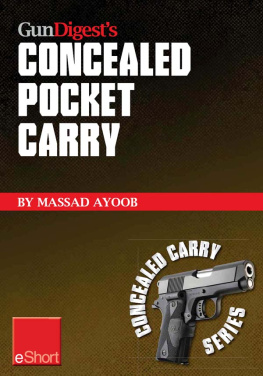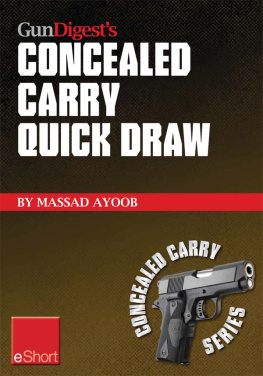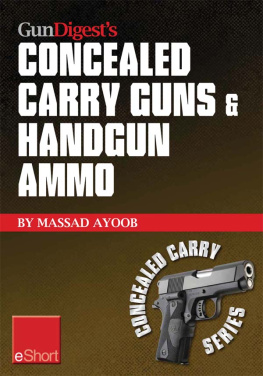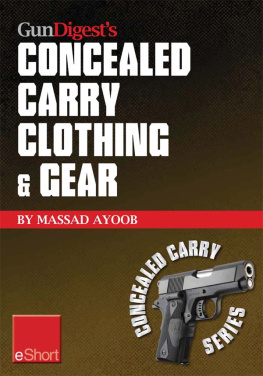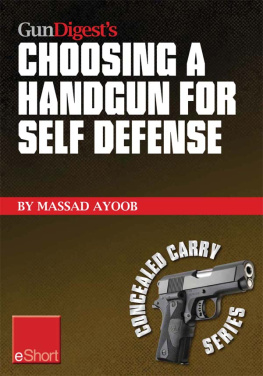In IDPA, you get a chance to watch the best in action, and try to beat them. Here the legendary Jerry Miculek draws his S&W 45 revolver in a blur as he bolts from seated start position en route to winning 2006 IDPA National Championships, Enhanced Service Revolver division.
Founded in 1996, the International Defensive Pistol Association (IDPA) was created so those who carried conventional, concealed handguns would have a venue for testing their skills in deploying them. Its founders were all distinguished alumni of the International Practical Shooting Confederation (IPSC) and members in good standing of that organizations arm in the United States, the U.S. Practical Shooting Association (USPSA).
Forgive all of that alphabet soup, but it helps to know the background. The late, great Jeff Cooper laid the groundwork for IPSC with the open gunfight simulation competition he and his colleagues pioneered in California in the mid-1950s, and Jeff was the prime mover in the creation of IPSC some twenty years later. IPSC started with street guns in street holsters, but because rules were left open to encourage innovation, competitive enthusiasm took over. Soon the gun it took to win a match was a huge pistol with a widened magazine chute big enough to be a flower-pot, an optical sight on top, exotic recoil compensation devices that might blind the shooter if fired from a retention position in real world self-defense, and a pure speed holster so huge it would take Count Draculas Cape to conceal it.
USPSA eventually caught onto that, and now has competition categories that allow ordinary stock firearms to compete effectively, though concealment is still not required. However, IDPA struck a responsive chord when founded by Bill Wilson and a board that included street-smart Walt Rauch, renowned combat handgun expert Ken Hackathorn, and some other knowledgeable authorities. It remains one of the most popular and fastest-growing handgun games in the country today.
As in real life, IDPA sometimes gives you targets that are down but not out. Ken Ortbach finishes the fight with flame blooming from his S&W Model 686 4-inch 357 as he wins the 2007 Pennsylvania State Championship, Stock Service Revolver division.
IDPA In Context
IDPAs founders and directors are clear on their purpose. IDPA is a sport and a skill test, not a training course! Certainly, you can learn from it. But, really, any skill test should be a learning experience.
Understand that you are not necessarily there to be the next national champion. Those titles have been held by some of the greatest combat handgunners in history: Ernest Langdon, Rob Leatham, Jerry Miculek, Dave Sevigny, Scott Warren, and more. As in most competitions, the majority of entrants are going for a personal goal. Perhaps a personal best, perhaps a trophy in their particular class.
Shooting classifications start at Unclassified and go through Novice, Marksman, Sharpshooter, and Expert, all the way up to Master. While IDPAs shooting classifications are performance-driven, the organizations shooting categories are determined by the type of gun used. It was understood at the beginning that it would not be a level playing field if Competitor A used a 6-shot revolver against Competitor B with an 18-shot Glock 17 on an 18-shot course of fire, even if both contestants were identical in skill. Because IDPA was created during the period of the onerous Clinton Crime Bill that banned manufacture and sale to civilians of magazines of greater than ten-round capacity, this was established as the uppermost limit for auto pistols. That rule remains in force, not to endorse the Clinton concept by any means, but simply to maintain the level playing field that is essential in any sport.
There were once four handgun categories, and for the last few years IDPA has had five, and arguably a sixth. Those categories are as follows, and they pretty much cover anything youre likely to be using in self-defense in the real world.
Stock Service Pistol (SSP). This is the most popular category in the game by far, and has been since IDPAs inception. It encompasses double action semiautomatics of the traditional style, double action only autos, and the Safe Action Glock, which is the single most popular brand in the category. Calibers may be 9mm Parabellum and up.
Custom Defense Pistol (CDP). This is the home of the classic Cooper gun, the single action, cocked and locked 45 auto. Maximum magazine capacity allowed is eight rounds. A minimum power floor of performance is required that is roughly equivalent to 45 ACP hardball. Shooters with single stack, double-action 45 autos often compete against the single actions in CDP because in SSP, an eleven-shot stage may require them to reload but not the contestant with an 11-shot pistol.
Enhanced Service Pistol (ESP). This category is for single action auto pistols, caliber 9mm and larger. Originally intended for the classic Browning Hi-Power, it tends to be dominated by 9mm, 38 Super, and 40 S&W guns in the 1911 format. It is also the home of the popular Springfield Armory XD, determined by BATF to be a single-action semiautomatic. No more than 10 rounds per magazine, and no more than 11 rounds in the gun to start.
Stock Service Revolver (SSR). Minimum 38 Special caliber, maximum four-inch barrel length, and firing a rimmed cartridge inserted with speedloaders instead of moon clips. A review of such electronic gun boards as www.smith-wessonforum.com show that an amazing number of people carry four-inch service revolvers concealed daily for self-defense, and more keep them as home defense guns. This is the place to test skill with them. It generally takes a +P 38 load to make the power factor, a minimum figure of 125,000 when velocity is multiplied by bullet weight, the same power floor as in SSP and ESP. The revolver cannot be loaded with more than six rounds at any time.
Enhanced Service Revolver (ESR). When SSR encompassed any six-gun 38-caliber and up, the Smith & Wesson Model 625 revolver kicked butt. That was because it could fire round nose 45 ACP ammo in moon clips, which went into the gun faster than any speedloader could insert rimmed cartridges. Once again, the goal was to level the playing field: these moon clip guns were moved into their own category, ESR. The 625 is still the gun to beat there.
Earlier, I said there was arguably a sixth category. That arguable category is Back-Up Gun (BUG). There are side matches for these guns, most notably at the National Championships where last year Smith & Wesson provided the Model 640-1 snub-nosed J-frame revolvers that were used in the competition. I shoot IDPA in a lot of places, though, and only one venue has regular BUG stages, and those are usually factored out of the main competition.
A pity, because the two-inch 38 revolver and the small pocket-size auto pistol, the guns that the BUG concept were built around, are perhaps the most popular carry guns out there, yet are not truly represented in mainstream IDPA competition. I for one would like to see it come into its own as a full-fledged gun competition category awarded the same respect as the big autos and revolvers are in IDPA.
Like real life, IDPA forces you to shoot from less than ideal positions. Here former national champ Tom Yost has to take one foot completely off the ground to get a shot at his last opponent at New England Regional Championships, 2007.

